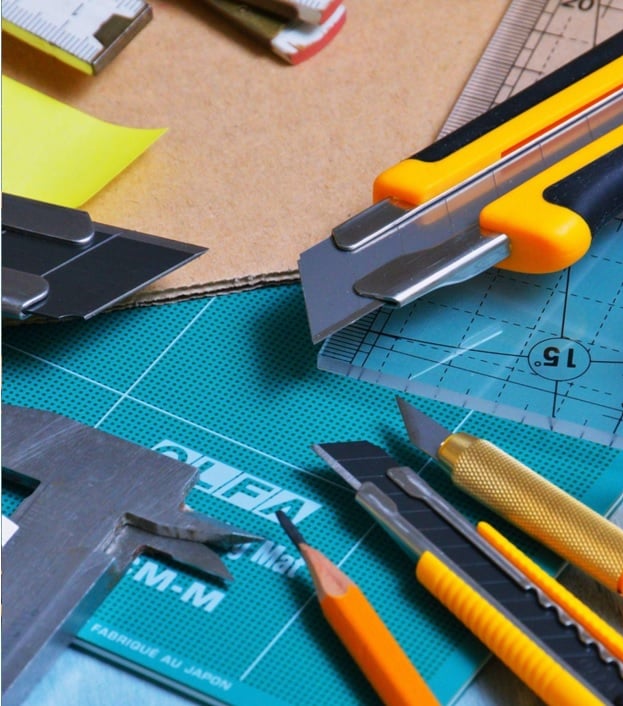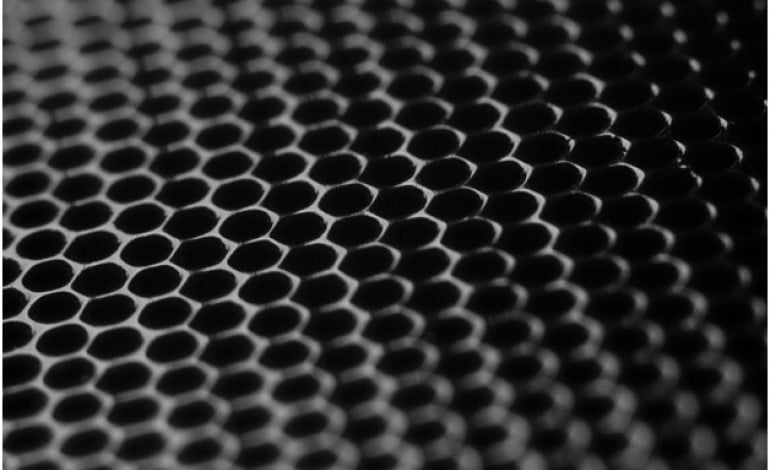Carbon fiber is easily one of the most impressive materials on the market today. In more recent years, it has exploded in popularity, as it can be used as an especially practical and effective material in a vast number of industries, including:
- Aerospace
- Aircraft (airplanes, helicopters, jet planes, etc.)
- Race cars and automobiles
- Drones or UAVs
- Manufacturing
- Knife scales
- Robotics
- Medical
- Electronics
Surprisingly, the above list isn’t even comprehensive, as carbon fiber can appear in nearly any industry, but these are where it is the most prevalent and applicable.
Carbon fiber cutting is a preliminary and necessary step in utilizing this unique material. However, while it may seem like an easy task to complete, it isn’t always so because it’s lightweight yet extremely strong. On top of that, there are specific tools that you need to get the job done efficiently, safety precautions to take, and the correct cutting tools to properly cut the material.
Safety Tips for Carbon Fiber Cutting
When carbon fiber is being cut, the process can lead to the expulsion of carbon fiber dust. Fortunately, carbon fiber dust isn’t toxic. However, it can be relatively abrasive and the cut panels can be quite sharp.
In order to keep your skin safe from irritation, cuts, and scrapes, we recommend that you wear gloves, long-sleeved shirts, and long pants (especially those made of wool or cotton). This dust can also cause irritation to your lungs and your eyes, so wearing safety goggles and a dust mask is extremely important as well. If you are using power tools, you should wear hearing protection, too.
Carbon fiber dust is known to be conductive. With that in mind, be sure that you are far away from electronic devices because this dust can cause damage to them and even lead to a shortage in an electrical circuit. Opt for a well-ventilated location as well and always remove your jewelry.
For disposal of the waste, use a shop vacuum cleaner or quality vacuum system when you’re sanding or cutting carbon fiber. As for your scraps, you should find a recycling service specifically for carbon fiber and use that for the best and safest disposal practices (carbon fiber isn’t biodegradable, so putting it in with your household or shop trash isn’t ideal).
General Tools and Aids to Prepare

As the case is with any project, you should prepare all of your tools and other aids ahead of the actual beginning to have peace of mind and lowered stress. Some items you should have ready to go include:
- A measuring tape: to ensure even cutting (remember: measure twice then cut once!)
- Backing material: try using wood or rigid foam to decrease the likelihood of backside blowout and help in achieving best results
- A marking tool: a metallic Sharpie is one of the best options for marking on carbon fiber. You can remove stray marks with acetone later. If you don’t have a metallic Sharpie, you’ll need masking tape, then a pen or pencil to write over that
- Painter’s tape: to increase precision and to know exactly where to cut
And, of course, you’ll need the tool(s) you’ll be using to physically cut the carbon fiber– and that brings us to our next point.
Best Ways to Cut Carbon Fiber By Hand
There are essentially two types of tools you can use for carbon fiber cutting: manual tools and power tools. Both types have their very own advantages and disadvantages but overall can cut your carbon fiber perfectly well when used correctly.
Scissors and Razor Blades
If your carbon fiber is .5mm or less in thickness, then it is perfectly fine to use scissors or razor blades to cut it. Steer clear of shears or scissors that have ridges or teeth, as these can actually cause cracks in the epoxy resin. However, beyond that aforementioned thickness, you should consider other cutting tools and techniques.
Check out our list of standard carbon fiber thicknesses which also lists key cutting tools and other information for them.
Hand Saw
A hand saw is one of the most classic and cost-effective tools for cutting carbon fiber yourself. The blade can dull rather quickly, but for the sake of your purposes, it is perfectly fine to use. Try a hand saw that has a higher TPI (teeth per inch) in order to get the best cuts possible.
Rotary Tools (Especially Angle Grinders)

And now for power tools, starting off with rotary tools and angle grinders more specifically. Angle grinders are impressively versatile electrical tools that are used to cut, sand, grind, sharpen, and polish a variety of materials– one of which is carbon fiber. This power tool is especially ideal because of its fast rotations, which lead to more accurate cuts in carbon fiber.
Rotary tools are exceptional power tools to use on carbon fiber because of their high RPM (rotations per minute), as briefly touched upon above. Dremels are also great options and will provide you with even more precise cuts than angle grinders, especially for smaller projects.
You should keep in mind that carbide, abrasive type cutters, and diamond-crusted tools are overall the best options because regular steel tools work well yet can wear down quickly.
CNC Machines
If you have access to CNC (computer numerical control) machines and know how to operate one efficiently, you can also use these to cut your carbon fiber sheets. However, sometimes holding the carbon fiber sheets can be uncomfortable and lead to poor cuts.
Water Jet Cutters
Water jet cutters are excellent options for cutting carbon fiber because they can cut those hard-to-reach nooks and crannies and create complex shapes. They also offer you increased control over the cutting surface.
Now that you have a far better understanding of carbon fiber cutting and what goes into it, you may be wondering if it’s worth it to seek outside assistance with cutting this material. Keep us in mind for your next cutting project, as we have CNC machines that are operated by our professionals to give you clean-cut carbon fiber.

